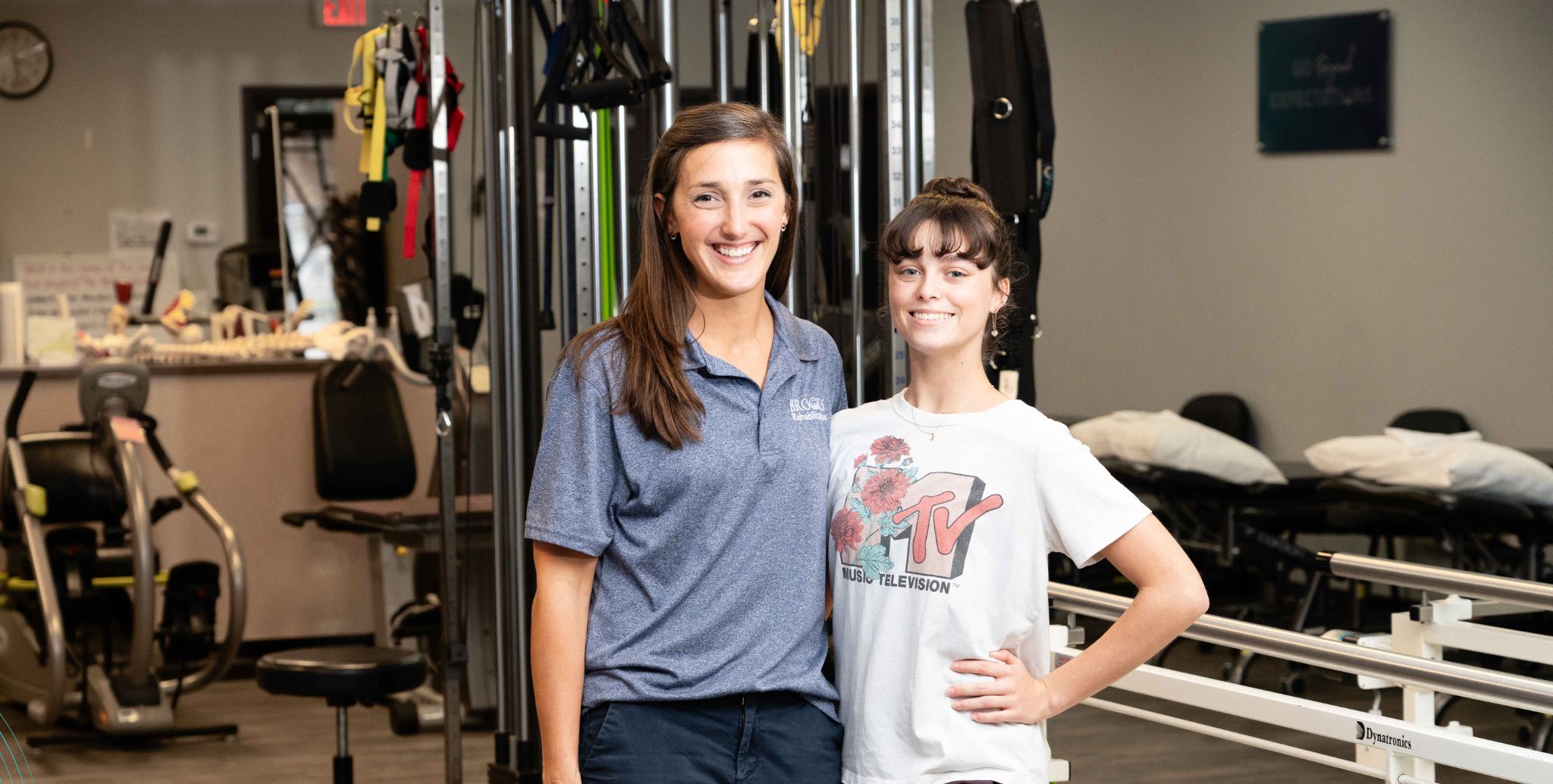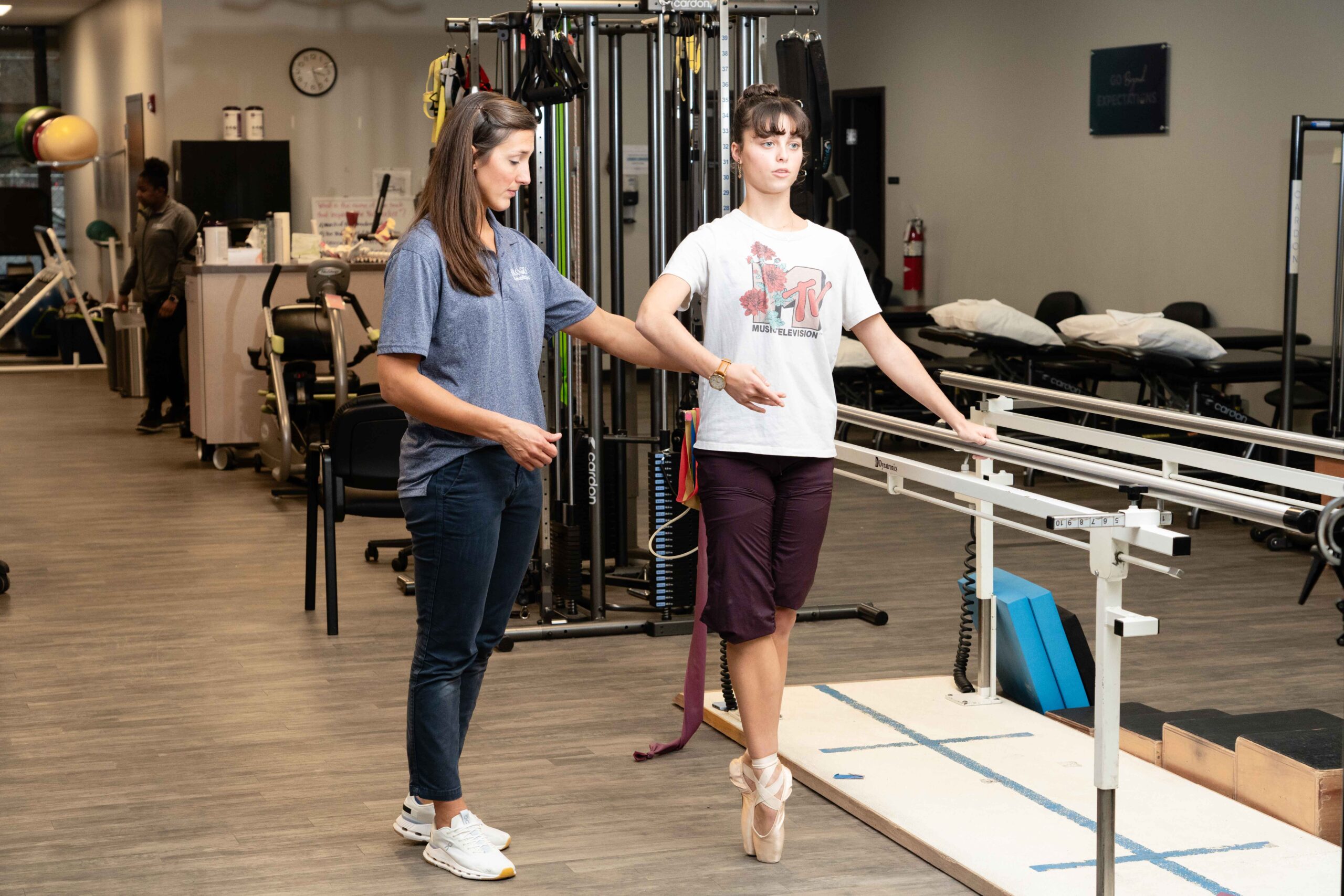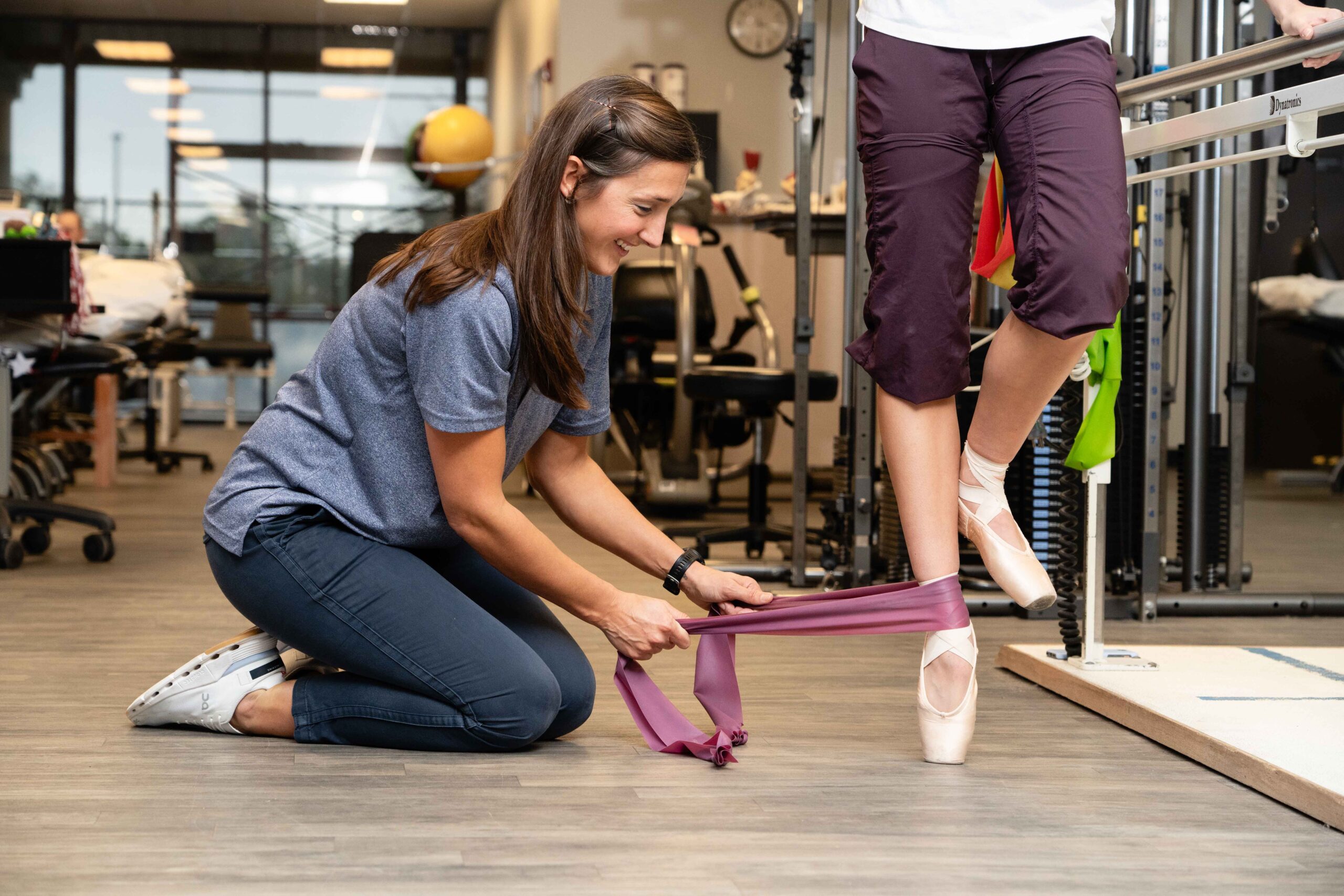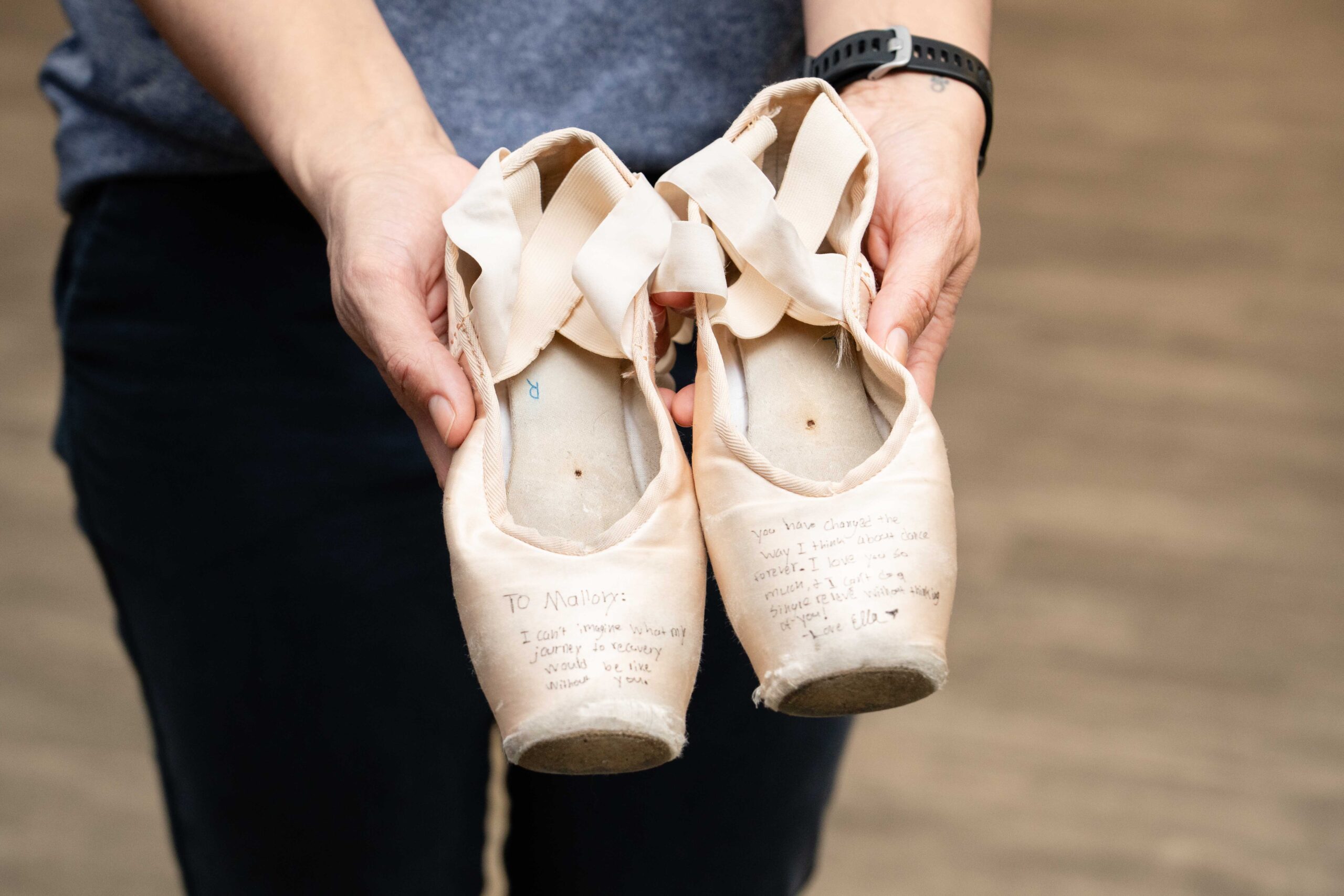Overcoming Chronic Foot Pain: How a Ballet Dancer Used Physical Therapy to Heal

Back to physical health resource hub
Ella Cauley’s ballet talent has taken her family by surprise. She tried ballet classes as a preschooler, but did not like the itchy tights. However, in third grade, she decided to try it again and fell in love with it. Then, at 16, she developed chronic foot pain and her future in dance became uncertain.
Ella dances six to seven hours a day, with a focus on pointe. As a ballet dancer, she’s accustomed to the muscle soreness and discomfort that comes with a dancer’s physically demanding lifestyle. But, when she began experiencing constant pain in her right foot, she knew something was wrong.
Foot Pain Concerns Lead to Finding a Cure
The chronic foot pain Ella was experiencing was focused in the tendons in the top of her foot that align with the metatarsal bones, a group of five long bones in the midfoot.
“Every time I jumped in class, or I did petit allegro, which is a series of jumps across the floor, it would hurt. It would hurt in my modern jazz class, too,” Ella said. The foot pain mostly occurred when she wore ballet flats, which do not have a reinforced toe box like pointe shoes.
Ella tried icing her foot, resting it and massaging it with a lacrosse ball, but the pain persisted. She worried it would keep her from doing the one thing she loved most. She went to see an orthopedic specialist, who referred her to physical therapy.
Ella’s Ballet Journey
Ella had found her passion. She was accepted into the highly competitive dance program at Douglas Anderson School of the Arts in Jacksonville, FL, and was invited to study with the Florida Ballet.
“All of sudden in 8th grade she just bloomed. I remember going to her performance and just being like ‘wow,’” said her mother Laura Cauley. “She was stunning.”
On a typical day, Ella wakes at 6:00 a.m. and arrives at school by 7:45 a.m. She has a 90-minute jazz dance class in the morning, followed by academic classes in the middle of the day and one to two hours of dance in the afternoon. In the evening, she dances for two to three hours with the Florida Ballet.
Identifying the Source of Foot Pain
Ella’s family choose Brooks Rehabilitation for physical therapy. There Ella met Mallory Behenna, PT, DPT, a physical therapist who was a former dancer.
“I did competitive dance growing up, and pointe was part of my training,” said Behenna, who has 11 years of experience as a physical therapist. “The needs of a dancer are very unique because they must have length and strength. There are very different demands on dancers compared to other athletes; so we can’t treat them like other athletes.”
Behenna completed a thorough evaluation of Ella by having her execute several ballet techniques in the outpatient clinic while recording slow-motion video to assess Ella’s foot positions. She immediately noticed that Ella was balancing most of her weight on her big toe, rather than evenly distributing her weight across her toes.
“There are really small muscles between the bones of your forefoot that help control the toe position in relationship to midline. The way her foot was positioned, with all her weight on the big toe, was overworking the lesser toes to try to keep her en pointe,” Behenna said.

Corrective Treatment Took Practice
After dancing for eight years, Ella had to retrain her muscles to execute certain techniques. In therapy sessions, Behenna focused on repetitive motor-control exercises that helped Ella re-learn ballet techniques with precise foot positions that supported proper weight distribution. They also worked on strengthening Ella’s knee, hip and ankle.
“Thankfully she’s very in tune with her body and she was able to give it the attention she needed,” Behenna said. “She has incredible follow-through, especially for a teenager.”
Over time, Ella learned to consistently execute her techniques with the proper foot positions and is now able to dance pain free.

Tips to Prevent Foot Pain for Dancers
According to PT Mallory Behenna, chronic foot pain in dancers can result from a variety of issues. If you are dealing with persistent pain in your foot/ankle, or any other body part, it is important to get an evaluation with a physical therapist who is experienced working with dancers or consult a physician.
Some tips to help dancers avoid foot/ankle pain are:
- Adequate warm up: if you do the ankle 4-way Theraband warm up, be sure you are doing enough reps in all directions to get the ankle warmed up. I recommend 30-50 reps in each direction. Also rolling your foot and calves before and after classes, all surfaces of the bottom of the foot not just the inside of the arch.
- Foot intrinsic strengthening: be sure you can dome the foot without gripping the toes on the ground to ensure the smaller muscles that help support the arch of the foot can activate independent of the toe flexors. These muscles being able to help support the arch will also take some load off the bigger muscles who have a secondary purpose of holding the arch support and help prevent straining them over time.
- Big toe strengthening: strengthening the big toe flexion (pointing the toe) is very important for dancers as this muscle helps keep the foot in plantarflexion or pointed, and can help stabilize the ankle while in releve or en pointe. Also, dancers need to stretch this muscle by extending the big toe and flexing the ankle after classes or rehearsals.
Paying it Forward
Ella was so grateful for Behenna that she decided to do something extra special to say “thank you.”
“There’s a tradition in professional dance companies where dancers will sign their pointe shoes. So I thought it would be so cool if I could give Mallory a pair of my dead shoes,” said Ella. For professional dancers, a pair of pointe shoes only lasts three to four months. After that, they’re referred to as dead shoes and are no longer worn. “Pointe shoes are the most coveted thing for dancers – they’re your livelihood. So I thought, ‘I’ll write a note on them and give them to her and that way she’ll always remember me.’”

To express her appreciation, Ella presented her signed pointe shoes and presented them to Behenna on her final day of therapy. “ I cried,” Behenna said. “Her shoes now hang above my desk, probably the most meaningful, thoughtful gift I’ve ever received as a PT.”
Behenna now volunteers once a month at the Florida Ballet to provide injury screenings for their dancers. Along with her screenings, she provide insights and recommendations to the dancers to help avoid any injuries and pain.
Physical Therapy at Brooks
If you or a loved one are suffering from chronic foot pain, Brooks can help. Find our nearest outpatient clinic and schedule an evaluation today.


